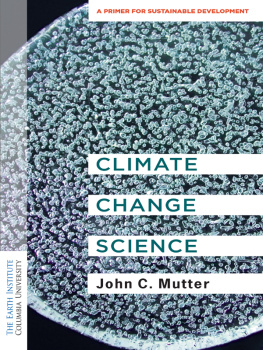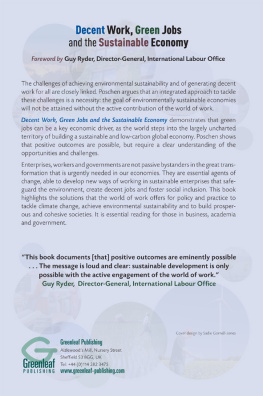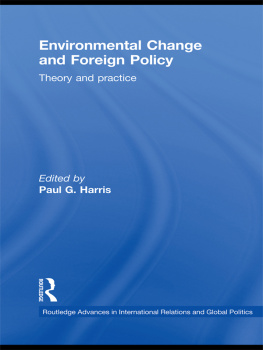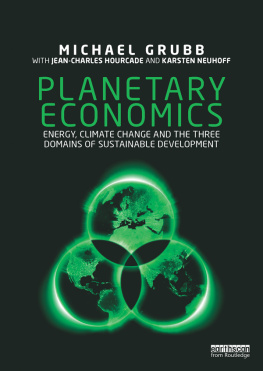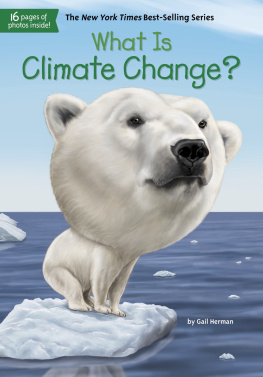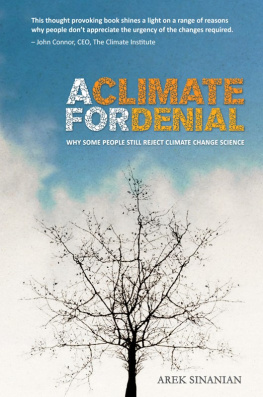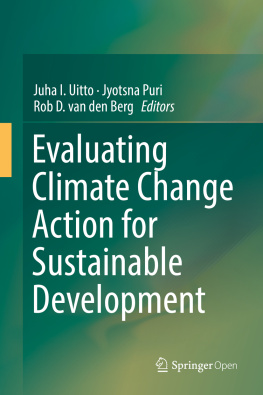Table of Contents
Climate Change
Science
Columbia University Earth Institute
Sustainability Primers
Columbia University Earth Institute
Sustainability Primers
The Earth Institute (EI) at Columbia University is dedicated to innovative research and education to support the emerging field of sustainability. The Columbia University Earth Institute Sustainability Primers series, published in collaboration with Columbia University Press, offers short, solutions-oriented texts for teachers and professionals that open up enlightened conversations and inform important policy debates about how to use natural science, social science, resource management, and economics to solve some of our planets most pressing concerns, from climate change to food security. The EI Primers are brief and provocative, intended to inform and inspire a new, more sustainable generation.
Renewable Energy: A Primer for the Twenty-First Century, Bruce Usher
Climate
Change
Science
A Primer for Sustainable
Development
John C. Mutter
Columbia University Press New York
Columbia University Press
Publishers Since 1893
New York Chichester, West Sussex
cup.columbia.edu
Copyright 2020 John C. Mutter
All rights reserved
E-ISBN 978-0-231-54972-1
Cataloging-in-Publication Data available from the Library of Congress.
ISBN 978-0-231-19222-4 (cloth)
ISBN 978-0-231-19223-1 (paperback)
ISBN 978-0-231-54972-1 (ebook)
LCCN 2019046850
A Columbia University Press E-book.
CUP would be pleased to hear about your reading experience with this e-book at .
Cover design: Julia Kushnirsky
Cover photograph: Tas van Ommen
CONTENTS
I must first acknowledge my dear friend and colleague Mark Cane, the G. Unger Vetlesen Professor in Columbias Department of Earth and Environmental Sciences. In one sense, Mark had no role in this primerhe did not review or critique it in any way, nor did he contribute a single word of text or an illustration. But in another way, Mark is wholly responsible for the book. I teach courses in science to undergraduates and graduate students who are primarily interested in something else, such as microeconomics. When I first started teaching at a graduate level, I asked Mark to give a few lectures on climate science because I did not have the confidence to do it myself. Mark is so clear, and his illustrations so enlightening, that I absorbed his lectures easily and wholly, learning as much as any student. When I subsequently began teaching climate science myself, Marks slide materials and my memory of his presentations became the foundation for my lectures. The structure of this primer follows the structure of Marks lectures.
My deepest thanks to Claire Palandri, a second-year PhD student (at the time) in the sustainable development program I direct. She read and commented on an earlier draft of the primer. Almost every paragraph and most of the figures had comments from Claire that were extremely helpful. I am not exaggerating when I say that I acted on every comment and that every comment led to an improvement.
Then I must thank Hilary Osborn, a student in the sustainability management program at Columbia, who undertook the monumental task of turning colored figures into grayscale images, searched for suitable figures for grayscale conversion, found sources for figures whose origin I had forgotten, and completed many other tasks. Hilary also read and critiqued the manuscript and provided helpful suggestions. She put in many hours on the project, cheerfully taking on some of the most tedious tasks. Had I needed to do that myself, this book would not exist.
I also am indebted to Gauthami Ram Mohan, who took over from Hilary once she completed her studies at Columbia and moved on to the real world of gainful employment. Gauthami joined the project as an engineering masters student who volunteered to help so she might learn about sustainable development issues. She, too, cheerfully took on some fairly tedious tasks with skill and dedication.
Finally, I express my deep appreciation to Jeffrey T. Kiehl for his very thorough and immensely helpful review of an earlier version of the manuscript, which he returned with extensive comments that I acted on in every case. He not only pointed out my errors, of which there were no small number, but also suggested how to correct them. It is a rare reviewer who will do that, and I am deeply grateful.
T his book provides the scientific basis required to assess what changes to the climate might plausibly come about in the future and what might cause these changes to occur. It provides the basics of physical climatology set out with the objective of developing an understanding of how human activity might lead to changes in climate and what form those changes might take. As such, it does not attempt to cover all aspects of climatology. One central theme is to elaborate the origin of the inherent and irreducible uncertainty in predictions of possible climate futures.
This text emphasizes physical aspects of the climate systemwinds, temperature, ocean currents, atmospheric circulation, and rainfallboth in building an understanding of the mechanics of the climate system and in describing drivers of change to the system and potential consequences, such as sea level rise and hurricane dynamics. Aspects of the climate system and climate change that depend upon and may influence ecological systems are dealt with in other books in the Columbia University Earth Institute Sustainablity Primers series.
, that atoms are now fully described. In the same way, no climate scientist would suggest that the climate system has been fully described and understood. It is, however, known at a level sufficient to say how human activity can influence climate.
Bertrand Russell expressed this idea succinctly: Science does not aim at establishing immutable truths and eternal dogmas; its aim is to approach the truth by successive approximations, without claiming that at any stage final and complete accuracy has been achieved. The structure of this text follows Russells theme of successive approximations in describing our understanding of the climate system. In taking this approach, I also follow a narrative arc that takes us from some of the earliest descriptions of the climate system to the present day, where much of the focus is on climate prediction. I also discuss some of the consequences of climate change in the context of sustainable development.
In the first approximation, we imagine Earth to be essentially static. There are no oceans and no vegetation, and the only feature of the atmosphere is clouds. From this starting point, I develop a theory that explains why Earths average temperature is around 16C. This leads directly to the greenhouse effect, using basic elements of well-established atomic physics, and to the inference that human activity can indeed alter climate through modification of the atmospheres chemical composition.
The second level of approximation acknowledges that Earth is a spheroid rotating on its axis, and that the temperature varies with location on the planet. From these facts, I develop an understanding of wind patterns, atmospheric and oceanic circulation, plus rainfall patterns and their variations. Developing this second-order approximation in no way invalidates conclusions drawn from the first level of approximation, but it adds features and details of the climate system not available in the first approximation. The second approximation draws on classical Newtonian mechanics.



